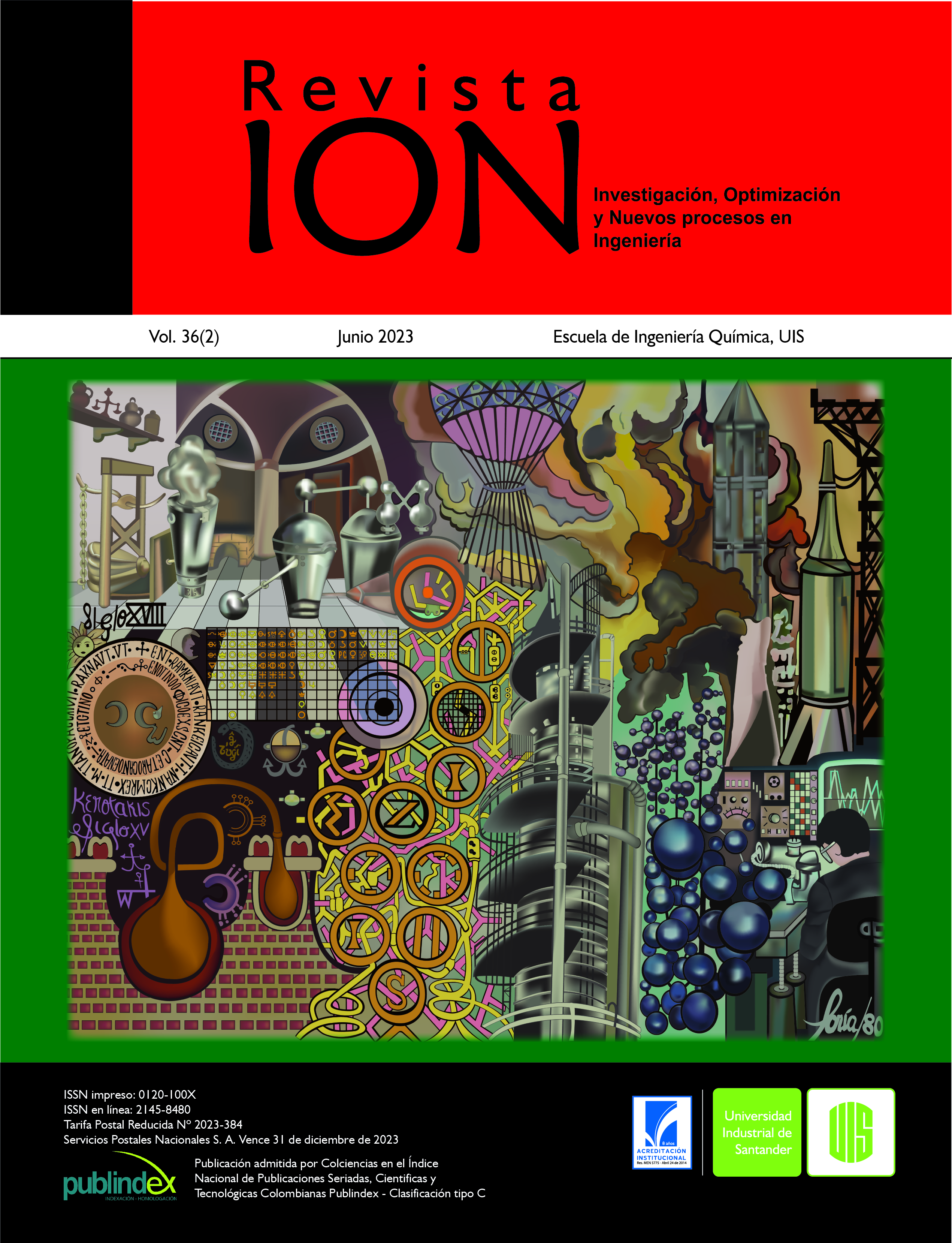Manufacture of 3D printing filaments with commercial and recycled polylactic acid filled with coffee waste
Published 2023-06-30
Keywords
- PLA,
- Filament,
- Filler,
- Spent coffee grounds
How to Cite
Copyright (c) 2023 Carlos Augusto Murillo Usuga, Santiago del Valle Tirado, David Volkmar Velez, Luis Frey Zapata Henao

This work is licensed under a Creative Commons Attribution 4.0 International License.
Abstract
In the present work, an experimental design 22 was carried out to evaluate the effect on the mechanical properties of the use of Coffee Waste (RC) processed for the cosmetic industry as filler in commercial and recycled Polylactic Acid (PLA) filaments. The factors selected for the study were the type of PLA used and the content of coffee waste used as filler. The statistical significance of the factors was studied by analysis of variance (ANOVA). According to the results obtained, the elastic modulus of the manufactured samples depends on the type of PLA used (p=0.0025), as does the elongation at break (p=0.0035), however, these variations are not significantly high. Homogeneous particle distribution was observed, and the Fourier transform infrared analysis shows that the incorporation of the RCs was successful.
Downloads
References
- Mikula K, Skrzypczak D, Izydorczyk G, Warchoł J, Moustakas K, Chojnacka K, et al. 3D printing filament as a second life of waste plastics—a review. Environ. Sci. Pollut. Res. 2021;28(10):12321–33. doi.org/10.1007/s11356-020-10657-8
- Pakkanen J, Manfredi D, Minetola P, Iuliano L. About the use of recycled or biodegradable filaments for sustainability of 3D printing: State of the art and research opportunities. Smart Innov. Syst. Technol. 2017;68:776–785. doi.org/10.1007/978-3-319-57078-5_73
- Ngo TD, Kashani A, Imbalzano G, Nguyen KT, Hui D. Additive manufacturing (3D printing): A review of materials, methods, applications and challenges. Compos. Part B Eng. 2018;143:172–196. doi.org/10.1016/j.compositesb.2018.02.012
- Rael R, San Fratello V. Printing Architecture: Innovative Recipes for 3D Printing. New York: Princet. Archit. Press; 2018.
- Chang YC, Chen Y, Ning J, Hao C, Rock M, Amer M, et al. No Such Thing as Trash: A 3D-Printable polymer composite composed of oil-extracted spent coffee grounds and polylactic acid with enhanced impact toughness. ACS Sustain. Chem. Eng. 2019;7(18):15304–15310.
- Murariu M, Dubois P. PLA composites: From production to properties. Adv. Drug Deliv. Rev. 2016;107:17–46. doi.org/10.1016/j.addr.2016.04.003
- Kanlayavattanakul M, Lourith N, Chaikul P. Valorization of spent coffee grounds as the specialty material for dullness and aging of skin treatments. Chem. Biol. Technol. Agric. 2021;8(1):1–12. doi.org/10.1186/s40538-021-00252-5
- Panusa A, Zuorro A, Lavecchia R, Marrosu G, Petrucci R. Recovery of natural antioxidants from spent coffee grounds. J. Agric. Food Chem. 2013;61(17):4162–4168. doi.org/10.1021/jf4005719
- Campos-Vega R, Loarca-Piña G, Vergara-Castañeda HA, Dave Oomah B. Spent coffee grounds: A review on current research and future prospects. Trends Food Sci. Technol. 2015;45(1):24–36. doi.org/10.1016/j.tifs.2015.04.012
- Ortiz-Barajas DL, Arévalo-Prada JA, Fenollar O, Rueda-Ordóñez YJ, Torres-Giner S. Torrefaction of coffee husk flour for the development of injection-Molded green composite pieces of polylactide with high sustainability. Appl. Sci. 2020;10(18):1–17. doi.org/10.3390/app10186468
- Enis IY, Sezgin H, Sadikoglu TG. Full factorial experimental design for mechanical properties of electrospun vascular grafts. J. Ind. Text. 2018;47(6):1378–1391. doi.org/10.1177/1528083717690614
- Kuehl RO. Diseño de experimentos Principios estadísticos de diseño y análisis de investigación. 2 ed. México D.F.: Thomson Learning; 2000.
- ASTM (D638-02a). American Society for Testing and Materials. Standard test method for tensile properties of plastics (D 638 - 02a) - SCAN VERSION. Astm. 2003;08:46–58.
- Ballesteros LF, Teixeira JA, Mussatto SI. Chemical, Functional, and Structural Properties of Spent Coffee Grounds and Coffee Silverskin. Food Bioprocess Technol. 2014;7(12):3493–3503. doi.org/10.1007/s11947-014-1349-z
- Darie-Niţə RN, Vasile C, Irimia A, Lipşa R, Râpə M. Evaluation of some eco-friendly plasticizers for PLA films processing. J. Appl. Polym. Sci. 2016;133(13):1–11. doi.org/10.1002/app.43223
- Suaduang N, Ross S, Ross GM, Pratumshat S, Mahasaranon S. Effect of spent coffee grounds filler on the physical and mechanical properties of poly(lactic acid) bio-composite films. Mater. Today Proc. 2019;17(4):2104–2110. doi.org/10.1016/j.matpr.2019.06.260
- Cruz F, Lanza S, Boudaoud H, Hoppe S, Camargo M. Polymer recycling and additive manufacturing in an open source context: Optimization of processes and methods. En: 26th Annual International Solid Freeform Fabrication Symposium; 2015 Aug 10-12; Austin, Texas. Austin: University of Texas at Austin; 2015. p. 1591–1600.


